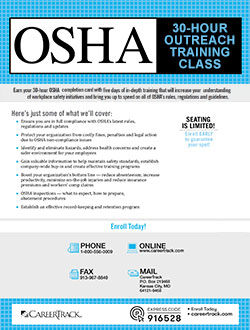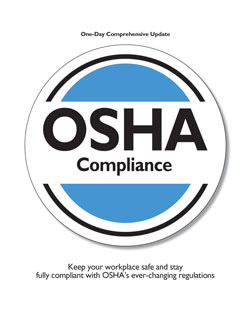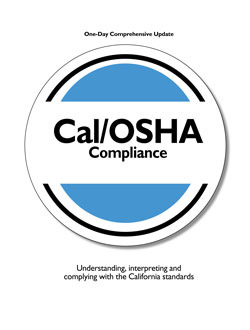Four Activities to Build a Safety Culture
- Author: Sheryl McAtee
- Categories:
- Tags:
- Share on:
The Occupational Safety and Health Administration (OSHA) has a mission to assure safe and healthful working conditions for working men and women, by setting and enforcing standards and by providing training, outreach, education and assistance (osha.gov/aboutosha).
Making sure those standards are met, of course, is up to your organization. While OSHA publishes a myriad of standards — on substances such as beryllium and benzene, on ergonomics and fall protection, and on noise and other environmental conditions — establishing a “safety first” culture is the best way to truly support your team.
Here are four ways to keep safety at the forefront of your culture:
- Measure safety publicly. There’s a reason many construction sites post the number of days without an accident — no one wants to be the one to break such a public symbol of success! Holding managers and workers accountable for setting and meeting safety standards highlights its importance. People pay attention to measures that impact their performance.
- Use awards to highlight success. Consider establishing an award system around safety, ranging from simple recognition to more formal awards, to recognize both small and large acts of safety. For example, a small gift could be used to reward a simple gesture, like one worker reminding another to use hearing protection or preventing a fall. A larger reward might be given for a systemic improvement that directly impacts safety.
- Provide training. OSHA provides several training programs and gives training cards to document completion. Taking the time for regular safety education and training signals its importance in your organization — from a “safety minute” at the start of a staff meeting to mandatory training that is tracked and reported, the time you spend on training builds a safety culture.
- Ask for help. Specifically ask your teams to contribute to improving safety across the organization. People are motivated by feeling needed and valued — engage them in building a safety culture by explicitly asking for their help in doing so.
Like employee motivation, a safety culture is neither static state or guaranteed — it must be continuously communicated and supported. The four basic steps above will help you meet both the letter and spirit of OSHA rules.
Choose a Seminar and Save $10
OSHA Compliance for Healthcare Professionals
1 Day
- CEU: 0.6
Team Training - Virtual or In-person

30-Hour OSHA Outreach Training Program (5-Day)
5 Day
- CEU: 3
- HRCI: 30
- PDC: 30
Virtual Seminars:
-
Apr 28-2
-
May 5-9
-
May 12-16
-
+ 4 more dates







